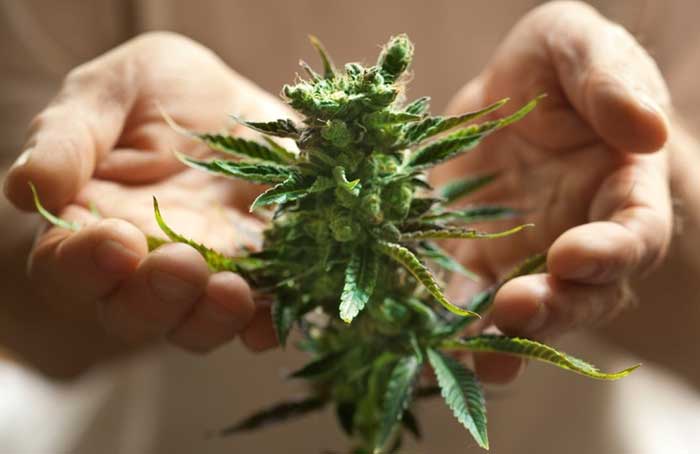Ron Strider
Well-Known Member
Any medicine, touted for everything from autism to asthma, sounds like snake oil.
But there is biological plausibility for these claims.
Researchers have unearthed receptors in the brain and body, that respond to THC, the psychoactive ingredient of cannabis. Pot works because it is mimicking what home-made molecules — the endocannabinoids like anandamide and 2 arachidonoyl glycerol — do.
CB1 receptors, which are mostly in the brain, regulate areas involved with mood, memory appetite and movement.
CB2 receptors are mostly found in muscle, bones, the liver and the immune system. When activated, they tend to have beneficial effects, like toning down inflammation.
So we seem to be have been gifted with an endocannabinoid system that blisses out our brain and ratchets down inflammation in the body. Why? "It seems to have a protective role," suggests Roger Pertwee, a pharmacologist at the University of Aberdeen who has pioneered the study of the endocannabinoid system.
Until 1964, we had no idea how cannabis works. In that year, Raphael Mechoulam at Hebrew University in Jerusalem and his team, isolated the psychoactive ingredient THC. THC works like a key that unlocks "receptors" on the surface of different types of cells. By unlocking receptors on different brain neurons THC creates sensations ranging from paranoia to euphoria and the munchies. The natural keys for these locks are the endocannabinoids "anandamide" discovered by Mechoulam's group in 1992 and 2- arachidonoyl glycerol, discovered by the same group in 1995.
Cannabis contains more than 500 chemicals. There are 104 cannabinoids unique to the plant as well as flavonoids, terpenes and fatty acids. Research is focused on the non-psychoactive cannabinoids shown. At present, it's not clear how these non-psychoactive compounds act. They don't unlock the same receptor as THC, nor do they seem to have their own receptors. There is some evidence that cannabidiol, modifies the THC receptor. Most of the evidence for the effects of these compounds comes from animal studies or from cells growing in a dish.
When it comes to the actual effects of cannabis compounds on human disease, so far there is very little solid evidence. Modest evidence now exists for the usefulness of cannabis in a rare form of epilepsy, nausea, chronic pain, Crohn' disease and the muscle spasms of multiple sclerosis.

News Moderator: Ron Strider 420 MAGAZINE ®
Full Article: Infographic: how cannabis works | Cosmos
Contact: Contact | Cosmos
Photo Credit: Anne-Marie Weber
Website: Cosmos - The science of everything
But there is biological plausibility for these claims.
Researchers have unearthed receptors in the brain and body, that respond to THC, the psychoactive ingredient of cannabis. Pot works because it is mimicking what home-made molecules — the endocannabinoids like anandamide and 2 arachidonoyl glycerol — do.
CB1 receptors, which are mostly in the brain, regulate areas involved with mood, memory appetite and movement.
CB2 receptors are mostly found in muscle, bones, the liver and the immune system. When activated, they tend to have beneficial effects, like toning down inflammation.
So we seem to be have been gifted with an endocannabinoid system that blisses out our brain and ratchets down inflammation in the body. Why? "It seems to have a protective role," suggests Roger Pertwee, a pharmacologist at the University of Aberdeen who has pioneered the study of the endocannabinoid system.
Until 1964, we had no idea how cannabis works. In that year, Raphael Mechoulam at Hebrew University in Jerusalem and his team, isolated the psychoactive ingredient THC. THC works like a key that unlocks "receptors" on the surface of different types of cells. By unlocking receptors on different brain neurons THC creates sensations ranging from paranoia to euphoria and the munchies. The natural keys for these locks are the endocannabinoids "anandamide" discovered by Mechoulam's group in 1992 and 2- arachidonoyl glycerol, discovered by the same group in 1995.
Cannabis contains more than 500 chemicals. There are 104 cannabinoids unique to the plant as well as flavonoids, terpenes and fatty acids. Research is focused on the non-psychoactive cannabinoids shown. At present, it's not clear how these non-psychoactive compounds act. They don't unlock the same receptor as THC, nor do they seem to have their own receptors. There is some evidence that cannabidiol, modifies the THC receptor. Most of the evidence for the effects of these compounds comes from animal studies or from cells growing in a dish.
When it comes to the actual effects of cannabis compounds on human disease, so far there is very little solid evidence. Modest evidence now exists for the usefulness of cannabis in a rare form of epilepsy, nausea, chronic pain, Crohn' disease and the muscle spasms of multiple sclerosis.

News Moderator: Ron Strider 420 MAGAZINE ®
Full Article: Infographic: how cannabis works | Cosmos
Contact: Contact | Cosmos
Photo Credit: Anne-Marie Weber
Website: Cosmos - The science of everything


